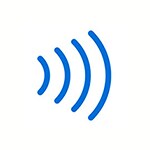5 Min Read | Updated: July 17, 2023
Originally Published: July 31, 2020
Is Contactless Payment a Wiser Choice?
Discover the surge in contactless payments, offering convenience and security through tap-to-pay technology and mobile wallets for faster and safer transactions.

This article contains general information and is not intended to provide information that is specific to American Express products and services. Similar products and services offered by different companies will have different features and you should always read about product details before acquiring any financial product.
At-A-Glance
Contactless payments are experiencing surging growth in the U.S thanks to increased digitization nationwide and faster, more convenient transactions for shoppers.
Contactless payment options range from contactless cards to payment-enabled apps on smartphones (digital wallets), tablets, smartwatches, key fobs, and wearable devices.
Experts say contactless payment advantages outweigh the disadvantages. Contactless payment can be more secure than traditional credit cards and is less likely than cash to spread germs.
Suddenly, everywhere you go, from the supermarket to the subway, people are reaching for their credit cards – or digital wallets – to tap, pay, and get on with their day. Contactless payment usage is finally gaining traction in the U.S., which has lagged behind countries like the U.K., Canada, Australia, and South Korea in adopting contactless payment solutions.
Contactless payments are poised to grow dramatically in the U.S. and around the world, with U.S. transaction values projected to ramp up from $178 billion in 2020 to over $1.5 trillion in 2024 and reaching $10 trillion globally by 2027, according to Contactless Payments: Market Status, Vendor Analysis & Market Forecasts 2020-2024, a report from research firm Juniper Research.1
What is contactless payment and why is it surging in popularity?
What is Contactless Payment?
A contactless payment is a safe, convenient way for you to buy groceries, your monthly transit commute, that new pair of boots – basically any goods and services – whether you’re in a physical store or business, paying through an app, or buying online.
Known for its “tap-to-pay” technology, contactless payment lets you pay for virtually anything by waving your credit card near a contactless-enabled, in-store checkout terminal, as long as your card has the radio wave icon shown below. Of course, the store has to accept contactless payments, and not every credit card is equipped with tap-to-pay. Contactless credit and debit cards employ EMV chips (like those in traditional chip cards), plus a contactless chip and Radio-Frequency Identification (RFID) antenna.

Such smart credit cards are just one form of contactless payment. Smartphone-enabled digital wallets (aka mobile wallets), smartwatches, and other wearable devices are also embedded with tap technology. With digital wallets, the smartphone has a chip that connects and encrypts credit card information, and a Near Field Communication (NFC) chip that relays data to complete the purchase. When setting up or updating your digital wallet and devices, you can link your debit and credit cards to the digital wallet app on your phone and designate which card to use as the default for contactless payments.
Contactless credit cards and enabled devices like smartphones need to be placed within several inches of the retailer’s card reader to exchange encrypted data. Once activated, voila! The payment is usually completed in a few seconds.
Weighing Contactless Payment Advantages and Disadvantages
You might be thinking, sure, contactless payment sounds easy and convenient, but are there security concerns to consider? Actually, experts believe that the pros far outweigh the cons. What’s more, contactless payment cards and digital wallets offer differing benefits.
Contactless payment through your digital wallet is considered about as secure as you can get because your card information is never given to a retailer. Instead, when you make a transaction with your digital wallet, your phone uses a virtual number known as a “token.” Once the retailer greenlights that token, which, by the way, is used only for that one purchase, your encrypted payment information is approved.
EMV chip-enabled cards, both contactless and traditional, also use per-transaction, advanced encryption, however, they include a credit card number that could be hacked. With digital wallets, you’re less likely to forget your credit card at the store since you don’t need to take it out, and you might even be able to leave your credit cards at home. Should you lose your real wallet, it can be faster to pause your cards through your digital wallet.
On the flip side, while many national chains accept contactless payment through digital wallets, some merchants lack the technology, so you may need to bring your real wallet along after all. Other considerations: If you forgot to charge your phone or your phone incurs damage, you may be out of luck using your digital wallet.2 And in some cases, you can only use your digital wallet in the U.S. if your linked debit card was also issued in the U.S.
Are Contactless Payment Options Subject to Fraud?
While fraud is unlikely in the realm of contactless payments, it’s still smart to take precautions. For instance, since your phone could be lost or stolen, it’s wise to use security measures like touch ID, facial recognition, and PIN numbers to approve transactions and to keep your phone and apps locked. Likewise, it’s a good idea to create notifications for your cards so you’re alerted in case of potential fraud or theft. Also, consider using credit cards instead of debit cards, because if your checking account is exploited, it’s easier to restore a line of credit or contact your credit card provider to stop payment on a transaction than it is to restore cash to your checking account. And don’t overlook anti-malware on your phone.
Embracing a Contactless Future
Is contactless payment the method of tomorrow? Current trends signal yes. According to McKinsey’s 2022 Digital Payments Consumer Survey, the use of digital payments soared to 89% in 2022, with more than two-thirds of Americans expected to hold digital wallets by 2024.3 As more people embrace contactless payment options, more banks are encouraging customers to use contactless-enabled credit cards, contactless use for mass transit is increasing, and merchants are installing or updating terminals for tap-to-pay transactions.
The Takeaway
Thanks to its ease and efficiency for both shoppers and retailers, as well as increased digitization nationwide, contactless payment is booming in the U.S. Known for its tap-to-pay technology, contactless payment options range from EMV chip-enabled credit cards to payment-enabled digital wallet apps on wearables and smart devices. These smart credit cards and devices can be used at contactless-enabled checkout terminals. Security concerns for contactless payment are minimal due to encryption and tokenization.
1 “Contactless Payments: Market Status, Vendor Analysis & Market Forecasts 2020-2024,” Juniper Research
2 “Why Your Phone’s Wallet is Safer Than Your Real One,” U.S. News & World Report
3 “Consumer trends in digital payments,” McKinsey & Company
Randi Gollin is a freelance writer, editor, and content strategist who’s covered topics including travel, shopping, and dining for tech and media brands and digital publications.
All Credit Intel content is written by freelance authors and commissioned and paid for by American Express.
Related Articles
Ways You Can Support Local Small Businesses
Many Americans are looking to support small businesses in their community by focusing more of their shopping locally. These tips can help you do so.
How and When to Pay Your Credit Card Bill
It’s important to pay your credit card bill in full—and on time—each month. Here’s what you need to know.
Earning Rewards and Cash Back While Shopping Online
Web and smartphone apps can earn you shopping rewards and cash back when you spend online, in addition to your credit card rewards. Here’s a look at this growing trend.









